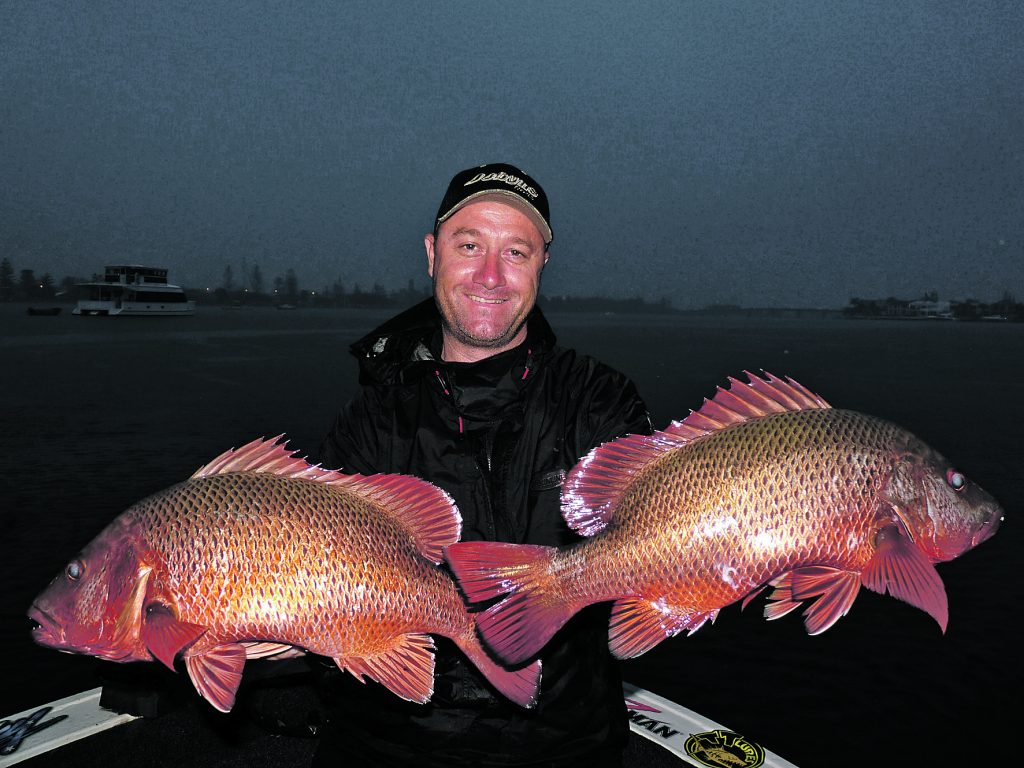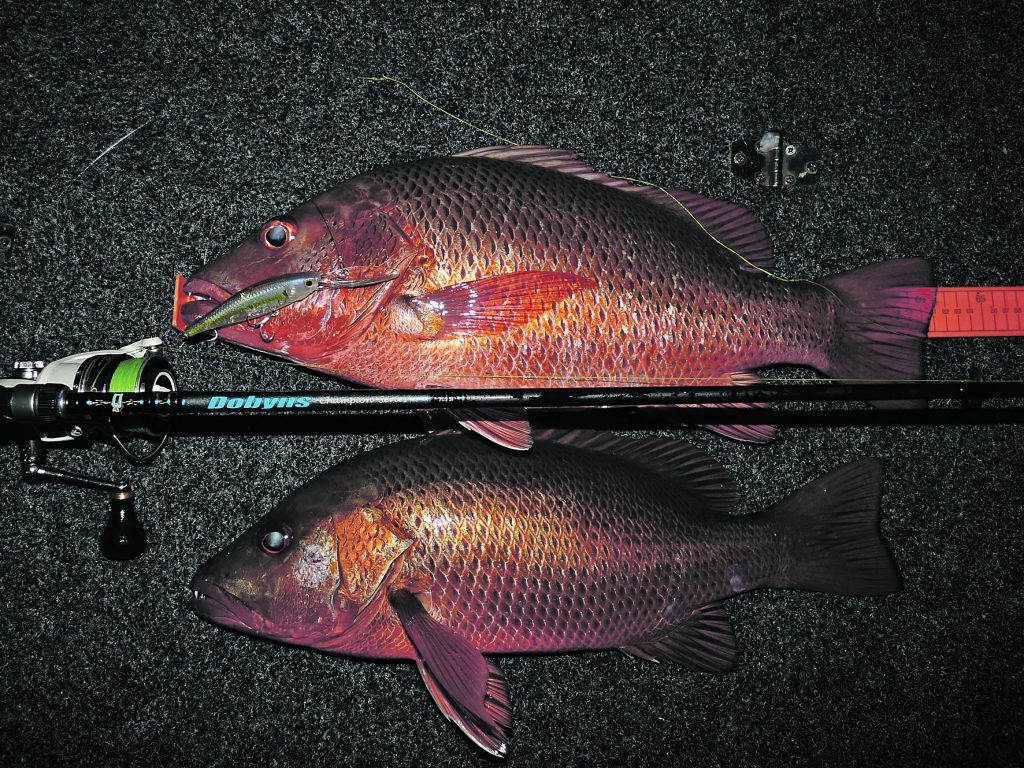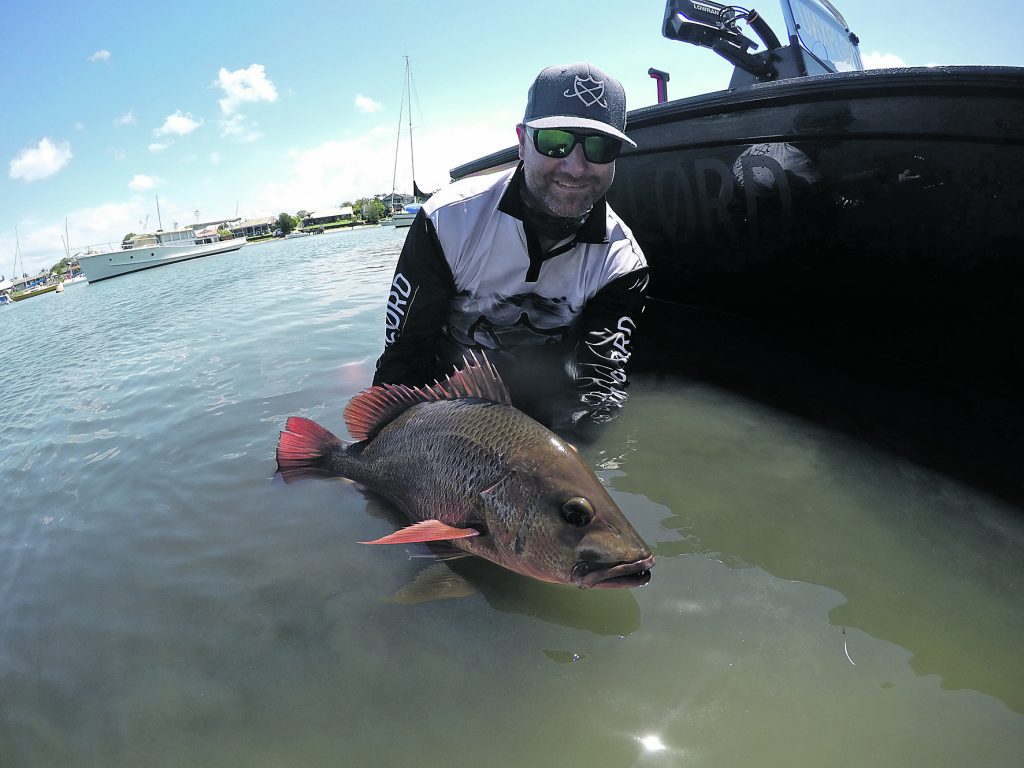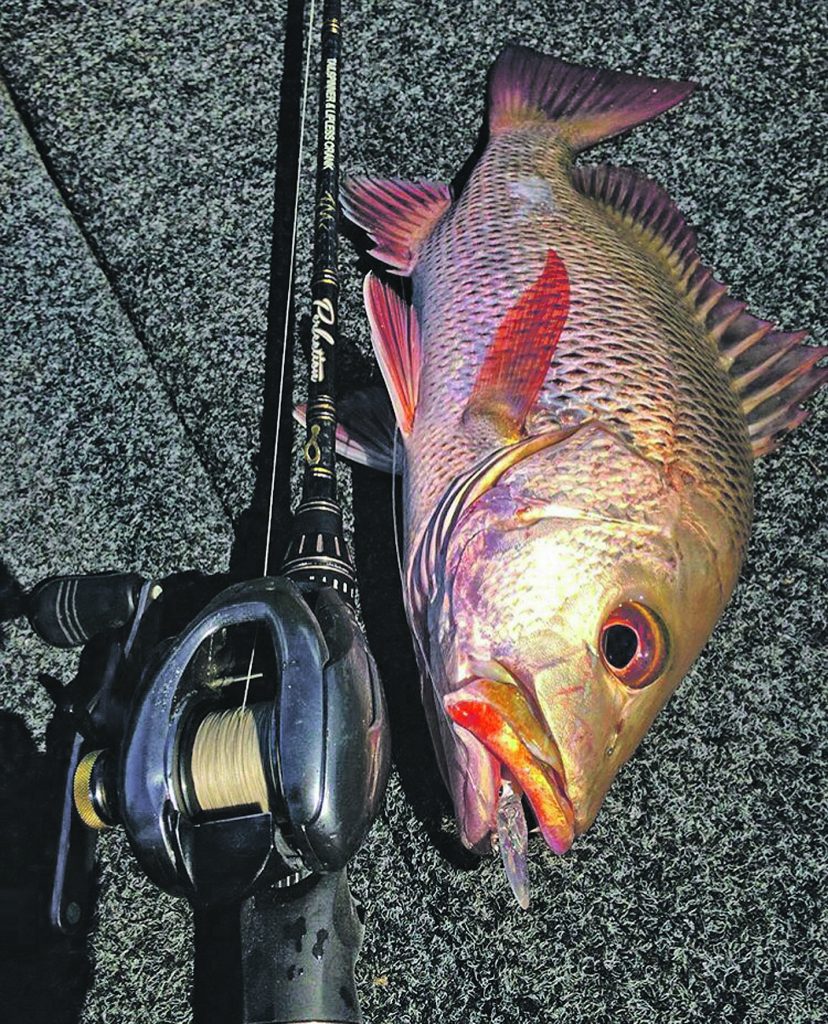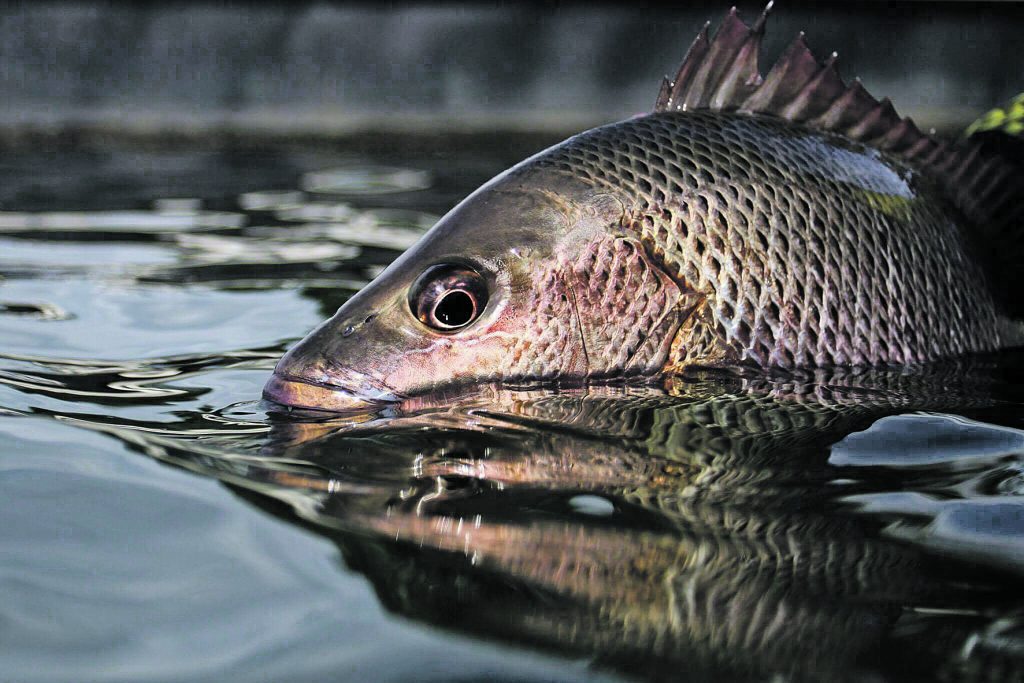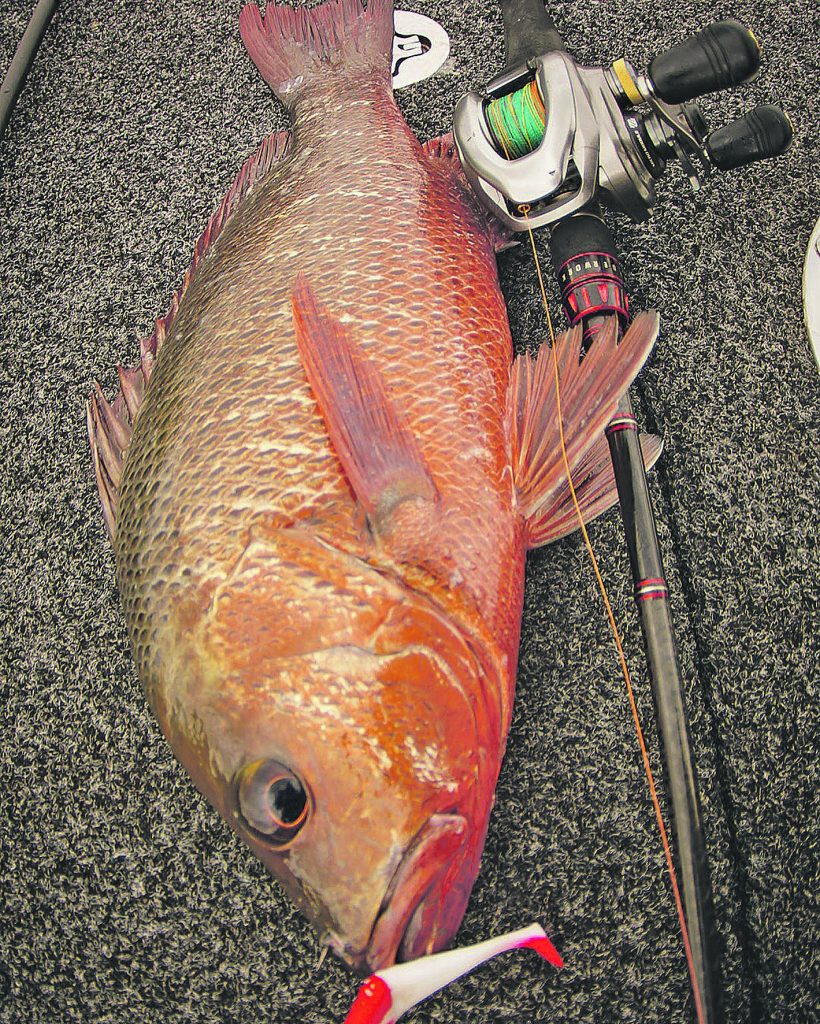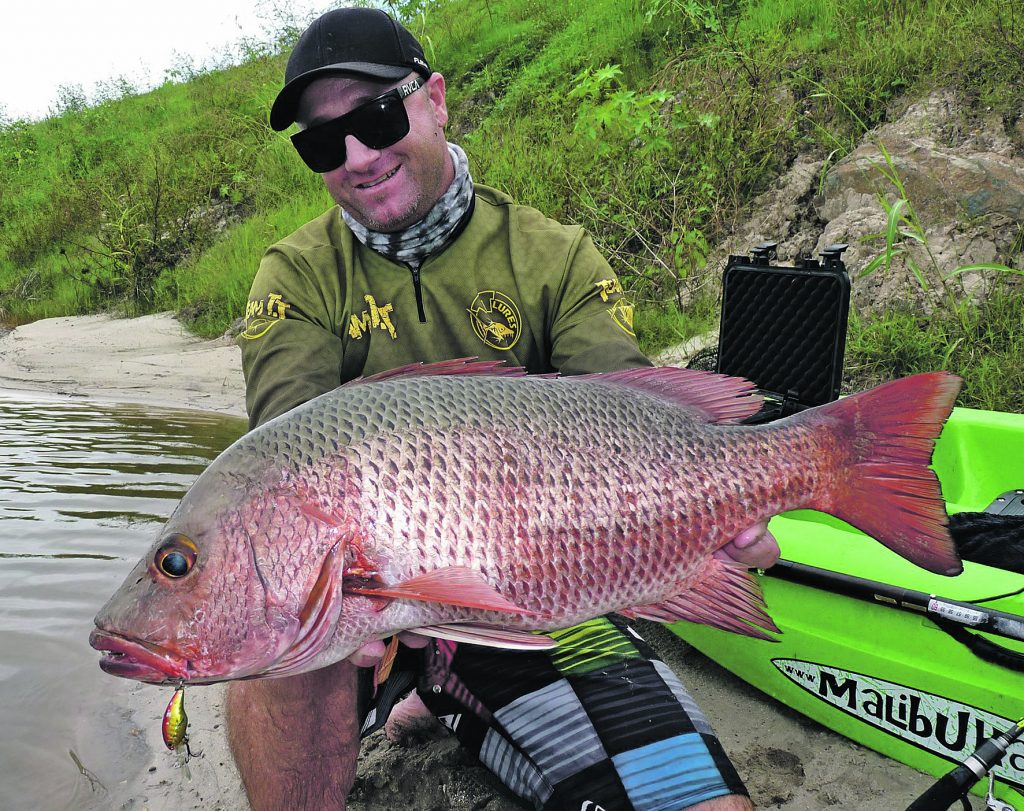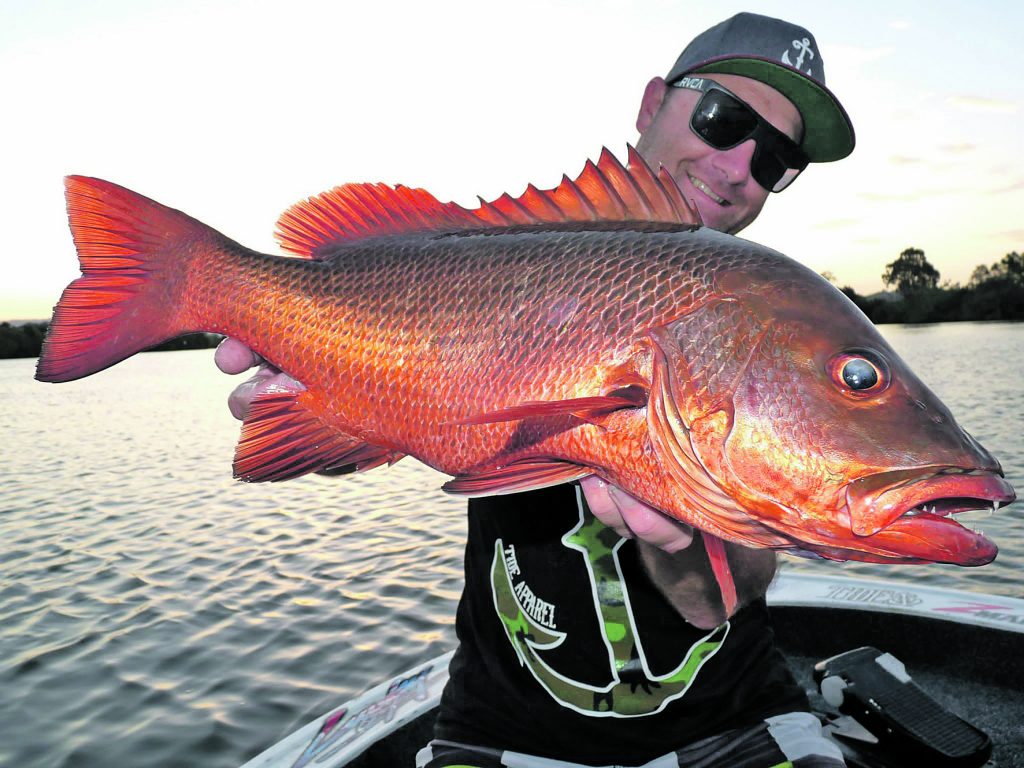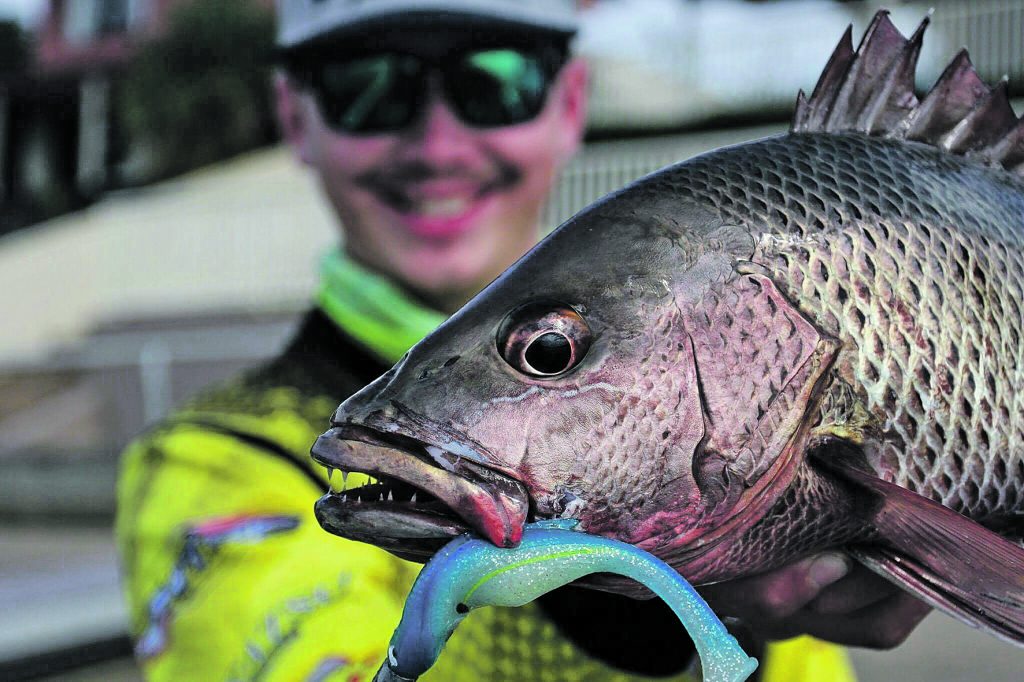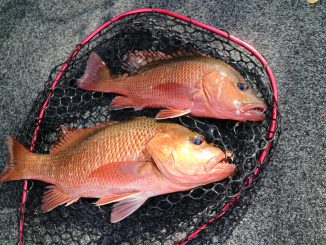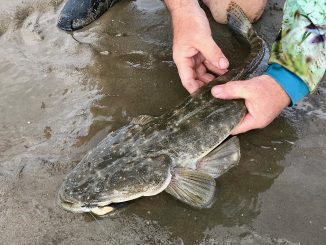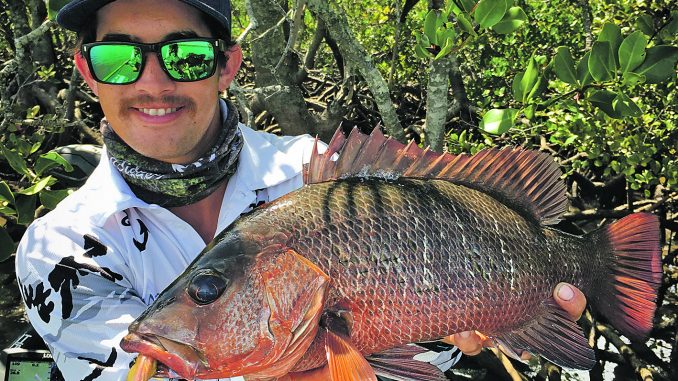
by Simon Goldsmith •
Few species garner the respect and adoration of mangrove jack. Highly-strung, aggressive and with a reputation for a crash-and-grab approach to living, mangrove jack are a fish that all light tackle anglers, both experienced and inexperienced, dream of catching.
Found and caught throughout Queensland, it’s perhaps in the southeast of the state where they are most revered. Here they occupy the mantle as the premier sportfish of the estuary. A species that has benefited from urban development and the increased abundance of habitat (bridges, pontoons, jetties), mangrove jack in the southeast can be found in good numbers and in XOS sizes. While they are abundant in numbers they are far from easy to catch, with limited bite windows, bust-offs, weather, and gear failures just a small selection of things that can influence angling success and consistency. Mick Horn, Alex Roy, and Dean Thomson are three anglers that in many ways have unearthed the keys to jack fishing success, and through hundreds of hours on the water have cracked the jack code. Here are their insights.
It’s no secret that mangrove jack come to life once the weather starts to warm. However, different anglers start targeting these fish at different times. “I start to chase them earlier than most,” explained Dean Thomson. “Once we get a couple of warmer days in August, that’s my cue to dust off the gear and start fishing for them.” Alex similarly takes his cue for the warmer weather as we come out of winter, and spring starts to kick into gear. “Traditionally September is when it starts for me,” he said. “Once the winter westerlies lay down and the warm northerlies start to blow is when my attention turns to jack fishing. The onset of the warmer weather and northerlies sees a spike in water temperature, and this is very much the trigger for them to become more active.” Mick Horn has a similar thought process, and it’s around September that he starts hunting for his red dogs. “I do a lot of my jack fishing around the Broadwater area of the Gold Coast, and the Broadwater in September generally has plenty of bait,” he said. “I think this plays a big part in them starting to turn on at that time of the year. Once they start I’ll generally get plenty of fish, and big fish, up until November. I think in many ways they’re feeding up and waking up from winter during that time, so it greatly increases your chances of catching fish.”
Click here for Gold Coast/Tweed fishing report
When it comes to locations and habitat for chasing jacks, the southeast is spoilt for both variety and abundance. Three structure types standout for our trio, and years and countless hours on the water have locked these spots as the most consistently productive places to target. “Mangroves, pontoons, and bridges are the big three,” said Alex. Dean is the one that loves the mangroves the most. It was a habitat type that he overlooked initiatally when he started chasing jacks in the southeast, but time in the tropics soon saw him key in on the potential of mangroves, and how to best catch jacks from them. “Mangroves are best fished on the last of the run-in, and the start of the run,” he explained. “The fish will move up in the shallows to feed and it’s when they do this that you can target them with shallow surface plastic presentations.” Of course, being able to identify the best mangrove stretch from the million of other mangrove banks is the hard part. Dean has a few things he looks for when trying to find the money bank that will hold fish. “I look for changes in formation, cut backs, current breaks, structure and features that will provide cover for them to ambush prey from,” he said. “The other all import thing that I look for is low tide cover, or a home that the fish will drop back to on a falling tide.” The truth of Dean’s rationale is evident in his go-to mangrove stretch in the southeast. A relatively nondescript location in the middle of nowhere and away from obvious jack holding cover, it’s a 100m stretch of bank that is lucky to have 3ft of water on it on the top tide. The fish, however, move into the area from a nearby submerged structure, feed on the top of the tide, then retreat back.
It’s this need for cover between feeds that sees pontoons as the most dominant habitat type in the southeast. Anyone who has spent time on the Gold Coast Broadwater or up the Nerang will know just how pontoons the area has to offer, and the jacks have taken full advantage of their presence. “A pontoon will hold fish at all stages of the tide and at all times of the day,” Alex explained. “That’s something that tide-dependant structures like mangroves don’t necessarily do. “Of course, they won’t hold in the same place on that pontoon throughout the tide and day,” Mick added. “They’ll reposition as the water falls and rises, ebbs and flows, the sunlight intensifies and adjusts position, and of course bait moves and varies in its abundance and type.” When it comes to finding the needle in the haystack and finding the pontoons and areas that fish gravitate towards, our three anglers look for particular features and attributes. “Jacks are a relatively a lazy fish, so I look for pontoons that have current but have a spots where the jack can sit out of the current and ambush prey from,” Alex explained. “The more structure and cover that’s in the area the better, and if there’s small drain with flow that’s likely to attract bait then all the better.” Pontoon size is another thing that Alex looks for, and the bigger the better. “The bigger the pontoon then the bigger the roof over their head and they love that,” he said. “Add in growth on the pontoon, a boat tied up on the front, or even better, a seapen, then I’m confident there will be a jack at home.” Great minds think alike. and Mick similarly looks for pontoons with current, the presence of which delivers bait to jacks in waiting. “Current results in pressure points and helps create ambush points that jacks will hold up into,” he said. “If you want to find pontoons that will consistently produce fish then this is what you want to look for.”
While Mick has caught plenty of fish off pontoons, bridges also feature heavily on his run sheet of hot spots. Not all bridges are created equal though, and Mick seeks out particular types with particular features. “I like the bridges that have the large concrete block that sits atops the pylons,” he said. “Traditionally this blocks sits out of the water then extends down into the water a few feet and creates are large shaded rooftop that the fish will sit under.” Current is one thing that Mick looks for, but there’s a line between enough current and too much. “You want that current to push because it triggers the bite, but if it gets too strong the fish will move, drop deep or hold super tight to cover. It also makes it more difficult to get your lure in the zone properly, and to work the lure just right,” he explained. “In this situation I often stay on the same bridge but move to the pylons closer to shore and more out of the current.” An adjustment that is often be difference between success and failure.
Knowing where to fish is one thing, and knowing how to fish the location is something else entirely. In the mangroves Dean fishes deep, and varies what he does and his retrieve until he cracks the pattern of what the fish want. “My go-to lure is a Texas-rigged Nories Spoon Tail Shad, and I skip it as far back and as deep into cover as I can,” he said. “I then vary the retrieve between a slow roll, burn, switch, and pause. Usually somewhere in amongst all those you’ll find the speed and movement that triggers them to bite.” Working the lure through the cover and past where the fish are likely to be holding is obviously crucial, as is making repeated casts to likely-looking cover. If it looks good to you, there’s a very good chance a jack will think likewise. Laydowns, current breaks, shade pockets and any ambush points, regardless of how small or big, are all likely hot spots. Keeping your eyes open for bait movement, and in particular panicked or fleeing bait, is a tell-tale sign that a jack may be home. It pays to pay attention to everything.
While pontoons are relatively straightforward and systematic to fish, fishing them thoroughly and for maximum result is another story. “A lot of jack anglers when they fish pontoons will hit the front, then each end and that’s about it. To fish pontoons to their best you need to fish the ones that hardest to fish and hit the features on the pontoon that aren’t always easy to get a lure into or near,” Alex explained. A soft plastic is a regular go-to for Alex on the pontoons. The 5” Castaic Jerky J Swim is his preferred bait due its pronounced tail action and its ability to continue to beat at super slow speeds. With a Jerky J in hand, Alex won’t cast at just anything on the pontoon but instead focuses on key features. “The gaps and slots between structure are the places you want to reach,” he explained, “and in most cases I try and skip the lure into them.” The gap between the boat and pontoon, a jet ski slide hanging off a pontoon, the walkways and poles, and most notably the motor of a boat tied up to a pontoon are all features that consistently produce fish for Alex. “The harder a spot is to get a lure into and the more shade and cover it offers, generally the better it is,” he explained. Dean thinks just like Alex when it comes to fishing pontoons. “Lures are replaceable, fish aren’t, so you want to put your lure into nastiest and hardest spots to reach and give yourself every possible chance to get a bite,” he said. For Dean, this means hitting every spot on a pontoon, often making repeated casts to the one feature. When it comes to how deep he fishes his plastic, Dean tries to have his lure swimming 2-3” deeper than the bottom of the pontoon. The poles, however, come in for their own special attention; Dean likes to pause his retrieve and sink his plastic down next to the poles. “The jacks love to hold on poles,” he explained, “but they often sit deeper on these than they do on the pontoon itself so it’s important to let the lure sink down to where they are.”
Mick adopts a power fishing approach when it comes to hitting pontoons with plastics. He works an area relatively quickly, focusing on the current pressure points on the pontoon, and swim a ZMan plastic past them to draw a response. “I don’t like to give them too long to look at the bait,” he said. “It’s very much about trying to get a reaction bite.” While Mick catches fish from all areas of a pontoon, it’s the short sides, the ends, and the back of the pontoons (shore side) that he finds the most productive. “The ends offer great ambush opportunities, while the back of the pontoon is a great low tide and dropping water spot,” he said. “It allows the fish to intercept the bait that’s pushed off the bank with the falling tide.”
It’s not all soft around the pontoons for our trio though, with Alex in particular using a hardbait approach at times, particularly when the fish are less active. An Imakatsu Killer Bill is Alex’s staple in this situation, and he de-tunes the lure so it tracks off centre. “With the lure de-tuned I cast parallel along the face of the pontoon, crank the lure down, then switch and pause the lure as it tracks down and in under the pontoon,” Alex explained. “This is a technique that very much takes the lure to fish, in under the pontoon and into the face of a waiting jack. You do need current for this to work though. Current assists in drawing the lure in under the pontoon, and also helps trigger the fish to bite.” Although the location, angler or technique may vary, the common theme is casting accuracy. All our anglers are exceptional casters, and experience and time on the water has shown our anglers that the difference between success and failure will often come down to inches, at times even less. So my advice is learn how to cast, and learn how to cast your lure into areas that other anglers can’t and won’t reach. You’ll be rewarded for it if you can.
Tackle selection is crucial when chasing jacks, and inferior and gear that’s too light for the task will leave you under-resourced and under-gunned. As Alex put it, “using the wrong gear is like taking a knife to a gun fight.” When it comes to choosing the right tool for the job, our trio generally turn to baitcaster tackle to handle the rigors of jack fishing. “A baitcaster gives you the stopping power that you need, and also the casting control that you don’t nesscarily get with spin gear,” Dean explained. When it comes to rod selection, Alex has two go-to’s, both from the Edge Rods stable: a BCR 664 Black Widow and a MBR 684 First Strike. Both are matched to Daiwa Zillions spooled with 25lb Toray Jigging PE, and 30lb leader. “These rods have the lightness to make casting easy and efficient, yet still have the power to muscle fish in heavy cover,” he said. “The 684 is my preferred soft plastic rod due to its ability to be able to skip plastics with absolute ease.” Dean likes to use a 6’8” rod, and the new JML Alliance Senstation HD is the one that he reaches for more than any at the moment. “A medium to heavy rod around 6’8” is right on mark for this style of fishing,” Dean said. “It’s the ideal length for underhand and skip casting yet still has the length you need.” When it comes to skipping lures into cover, few people can match the skills of Dean, and with a baitcaster in his hand he’s a model of casting efficiency and smoothness. “Most of the time I use my left hand for both fishing and casting, and crank the reel with my right hand,” he said. “This makes the casting process a fluid, one-motion process, and means your hand’s always in the power position for when the strike comes.” Matched to Dean’s rods are Shimano Ci4 reels spooled with 30lb Yamatoyo PE and 20-60lb fluorocarbon leader. Mick follows a similar trend to Alex and Dean when it comes to rod selection, with his favoured baitcaster being a Dobyns 664 Savy matched to a Daiwa Tatula spooled with 20lb Sunline Super PE and 20-30 flurocarbon leader. However, he also has a spin rod setup in his line-up. “I often use a spin rod on the bridges because it allows me to make those long casts when I need to,” he explained. “As well as that, it allows me to take up line quickly and take control of the fight faster than I can with a baitcaster.” His go-to spin rod, just like his baitcaster, comes from the Dobyns stable – a Dobyns Champion 705.
So there you have it – the inside goss from the three of the best in the southeast when it comes to catching jacks. Mangrove jack are one of the most challenging species to catch in this part of the world, and while there’s not much that we can do to influence the outcome once you get a bite, hopefully we’ve give you the information that will help influence your ability to get that bite. Remember that nothing replaces experience and time on the water when it comes to angling success, so get out there, get fishing, and enjoy the sensational jack fishing that the southeast has to offer.
Gold Coast weekly fishing report
LURES
Here are our pros’ top jack baits:
Dean’s Top Five Lures
• 5″ Nories Spoon Tail Shad (gold or chatreuse), Texas rigged on 1/2-1/4oz (5/0) worm hook bullet weight setup – mangroves and pontoons
• Nories Deep Laydown Minnow – pontoons and natural banks
• Ecogear SX60 (348) – pontoons
• Ecogear PP 60F – pontoons and rock walls
• Lucky Craft G-Splash 80mm (gold) – rock walls
Mick’s Top Five Lures
• 4″ ZMan Diezel MinnowZ (white), rigged on a 1/2oz (3/0) TT HeadlockZ jighead – pontoons
• Lucky Craft Shallow Pointer 100 (Gekiatsu gill and gold) – pontoons
• 4″ ZMan SwimmerZ, rigged on a 1/2oz (3/0) TT Head Hunter jighead – pontoons
• Lucky Craft XD Pointer 100 (striped shad and MS ghost chart shad) – bridges •
Alex’s Top Five Lures
• 5″ Castaic Jerky J Swim (French blue) rigged on a 3/8oz (7/0) TT jighead – pontoons
• OSP Power Dunk (sexy shad) – rock walls and rock bars
• Castaic soft plastic rigged (natural colours) on 1/4oz (6/0) Weighted Owner Beast hook – natural structure
• OSP Yamato Jnr (natural mullet) – topwater
• Imakatsu Super Killer Bill (natural colour) – shutdown pontoon bite

